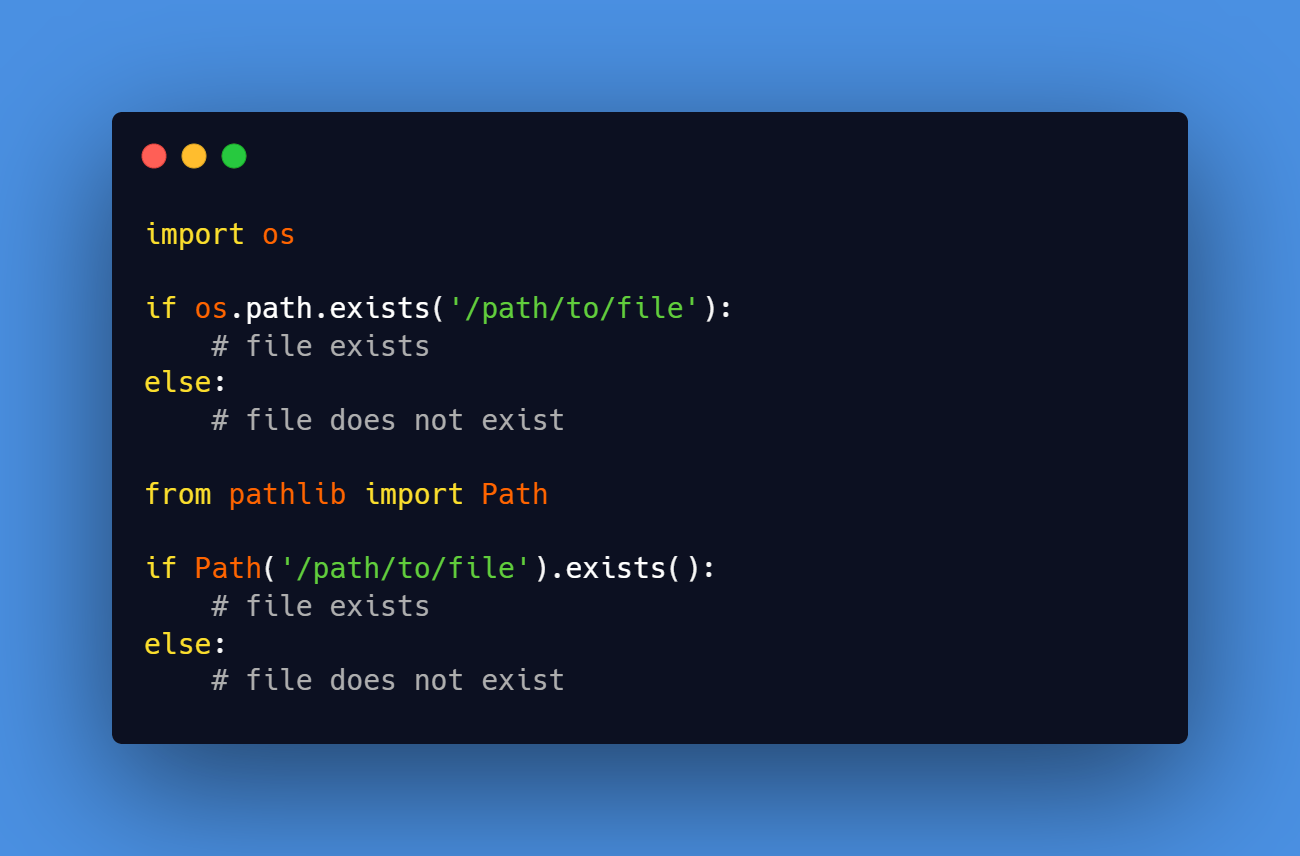Whether you’re working with files in your local file system or interacting with a remote server, it’s important to know how to check if a file exists in Python. In this article, we’ll go over the various methods you can use to test if a file exists in Python, as well as some common pitfalls to avoid.
Method 1: Using the os module
The most straightforward way to check if a file exists is to use the os module, which provides functions for interacting with the operating system. Specifically, we can use the os.path.exists() function to check if a file exists:
import os
if os.path.exists('/path/to/file'):
# file exists
else:
# file does not exist
Code language: Python (python)This method is simple and effective, but it has a couple of drawbacks. First, it only works for files in the local file system. If you’re working with a file on a remote server (such as via FTP or SSH), you’ll need to use a different method. Second, os.path.exists() will return True for any type of file, including directories. If you want to check specifically for a file, you’ll need to use an additional function such as os.path.isfile().
Method 2: Using the pathlib module
Another option for testing if a file exists is to use the pathlib module, which was introduced in Python 3.4 and provides an object-oriented interface for working with file paths. To check if a file exists using pathlib, you can use the Path.exists() method:
from pathlib import Path
if Path('/path/to/file').exists():
# file exists
else:
# file does not exist
Code language: Python (python)Like the os module, pathlib only works with files in the local file system. However, it has the advantage of being more flexible and easier to work with than the os module. For example, you can use Path.is_file() to check specifically for a file, and Path.is_dir() to check for a directory.
Method 3: Using the os.stat() function
A third option for checking if a file exists is to use the os.stat() function, which returns information about a file or directory. If the file does not exist, os.stat() will raise an OSError exception with an error code of 2, which means “No such file or directory”.
import os
try:
os.stat('/path/to/file')
# file exists
except OSError as e:
if e.errno == 2:
# file does not exist
else:
# some other error occurred
Code language: Python (python)The os.stat() method is more low-level than the previous two methods, and is primarily useful for getting detailed information about a file or directory (such as its size, owner, and permissions). However, it can also be used to check if a file exists, and unlike the os and pathlib modules, it can work with files on remote servers (assuming you have the necessary access).
Pitfalls to Avoid
There are a few common pitfalls to watch out for when checking if a file exists in Python.
- File permissions: Depending on your system, you may not have permission to access certain files. If you try to check if a file exists using one of the above methods, you may get a permissions error rather than a “file does not exist” message.
- Case sensitivity: Some file systems (such as those on Windows) are case-insensitive, while others (such as those on Linux) are case-sensitive. If you’re not careful, you may end up checking for a file with the wrong case, which will result in a “file does not exist” message even if the file does exist.
- Hidden files: Some file systems have a concept of “hidden” files, which are files that are not normally visible to the user. If you’re checking for a hidden file, you’ll need to use a method that is able to see hidden files (such as
os.stat()).
Conclusion
In this article, we covered three different methods for checking if a file exists in Python: using the os module, using the pathlib module, and using the os.stat() function. Each method has its own strengths and limitations, so it’s important to choose the right one for your specific use case.

Leave a Reply